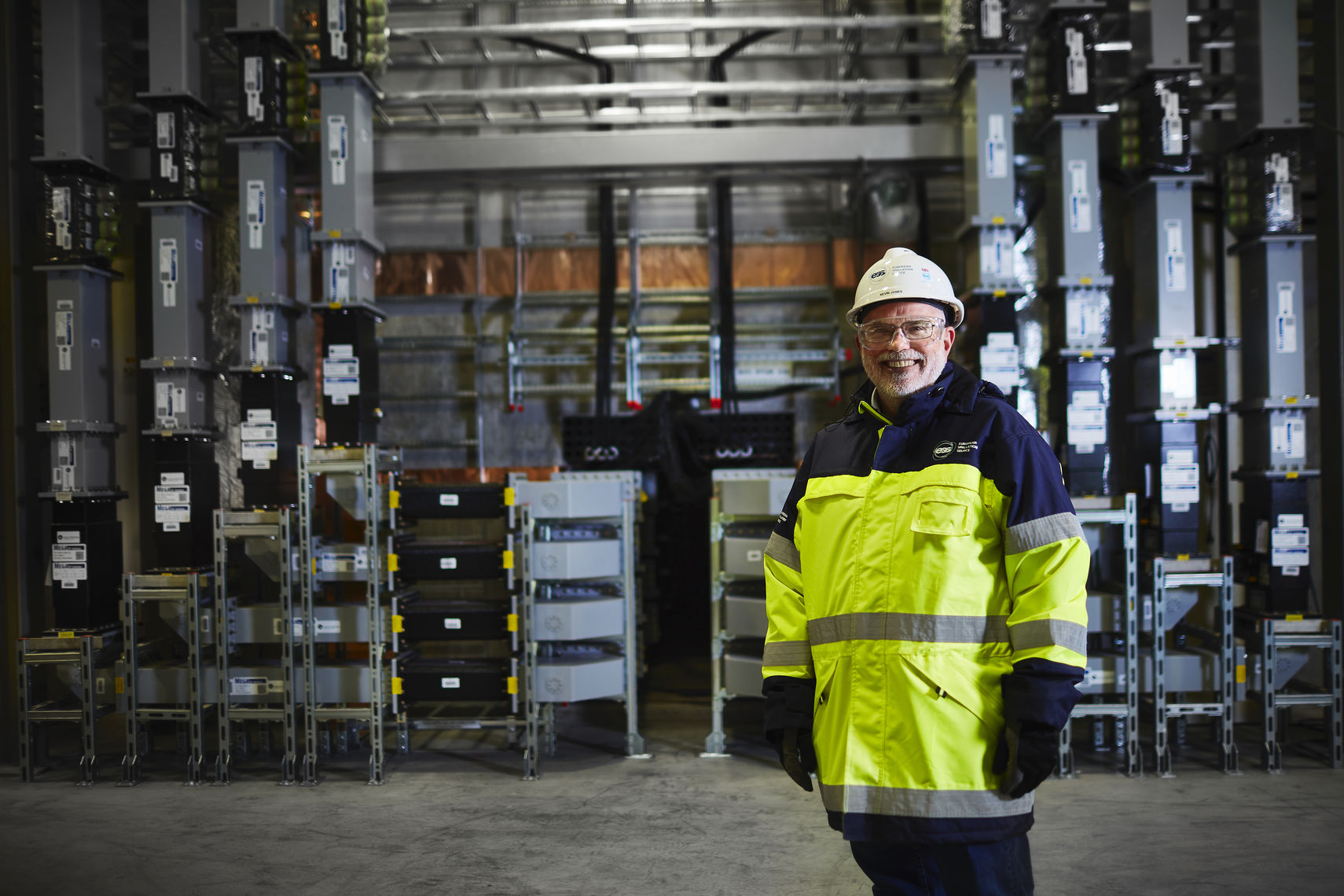
Looking back on the anniversary of the moon landing, who were the heroes? Armstrong and Aldrin were justifiably famous for taking great personal risk. But what about the Saturn V rocket, the computer systems, the administration, the janitorial services? The people behind those are equally heroes for enabling that milestone. Just as they did, every person at ESS is eager to enable great science – especially now as we see our own massive machine taking shape.
“We had a lot of visible changes in the field last year,” says Mark Anthony, Project Director for ESS. “If you walked out there in January 2019, you saw a lot of empty space. We’re proud to say that if you went out in January 2020, you saw tremendous changes that happened in just a year. All of these accomplishments didn’t just happen because they were listed on a piece of paper, but because of all the people involved – from individual contributors to work package managers and in-kind partners.”
The ESS construction project was 65% complete at the end of 2019 and has entered the initial operations phase. This is when testing and commissioning start on subsystems. ESS is also getting a lot of the infrastructure in place and hardware to install. During 2019, ESS was active in all three major areas – target, accelerator, and NSS instruments. As Anthony says, “Now it truly starts to look like a whole research facility and everyone feels involved.”
What you see is not all you get
Yet even as the massive facility takes shape in a way that anyone can now recognise, there is more being constructed behind the scenes than most people could imagine. In the beam drift room for example, between the end of the accelerator and the target, the team put in over 100 tonnes of steel shielding. In the klystron gallery, accelerator tunnel and connection passages, the RF team alone installed nearly 5,000 pieces of equipment.
“One of the most complicated parts is generating the power that adds energy to the particles,” explains Kevin Jones, Technical Director for ESS. “That requires installation of wave guides that carry power from the hardware in the gallery into the tunnel and couple it to the accelerating structures. There we’ve already installed 3,600 pieces of wave guide – all carefully bolted together and torqued and tested.”
“There’s a lot of work happening on a project like this that never gets a spotlight,” says Anthony. “It’s down in the end of a tunnel, through a cave, at the back, behind a wall. It’s not all about the big, shiny components; it’s equally about the behind-the-scenes work, where supervisors and their teams installed components during the night in the rain. There are hundreds of unsung heroes doing that work every day, and without them we would not be successful.”
Progress in parallel
The reorganisation in 2019 enabled a more central view of the project to help sync the high levels of collaboration needed as thousands upon thousands of parts are now being installed. Since
re-baselining the project due to additional requirements on the civil construction works, ESS has maintained the major milestones. The way the organisation is able to do this is to be more efficient by doing more work in parallel.
It takes enormous effort to constantly look ahead, develop contingency plans, and have something else to work on if one thing is delayed so the project doesn’t skip a beat towards the milestone of First Science in 2023.
“There have been a lot of benefits already,” affirms Anthony. “Simply co-locating the whole project installation organisation together has improved communications threefold. It also means we can do things using the same standards across subprojects and be safer. Last year we had zero working days lost due to accident or illness, and that hinges on communication and caring, paying attention to how each person’s work affects others.”
Stewarding a brighter future
A key word for the project in 2019 was learning, and that is certainly at the heart of everything at ESS. Right now, we are learning to build a facility unlike any other together with our in-kind partners and their decades of experience on how to design, manufacture and develop the key pieces of hardware. And learning will also be the daily purpose and legacy of what we’re building once in full operation.
“ESS presents enormous opportunity for us to learn things we don’t know that we don’t know,” says Jones. “For example, where we might make an enormous difference is in moderator technology.
The fraction of neutrons that facilities today make which can actually be used is tiny, maybe just 1%. We already have a brighter moderator design compared to other facilities, but if over the next decades we could continue developing technology to increase the number of usable neutrons by a factor of 10 or so, wow, that would be a huge impact on future science.”
“There’s a word I learned some time ago that I think is crucial for facilities like ESS,” continues Jones, “and that word is stewardship. This consortium of European nations has entrusted the ESS organisation with a significant amount of money. It’s our responsibility to make sure that investment is positioned to work sustainably and maximise the effectiveness of every neutron we make, enabling scientists to make ground breaking contributions for the next 40–60 years and beyond. If you take good care of them, accelerators will live almost forever. Our stewardship today must serve the future generations.”

























